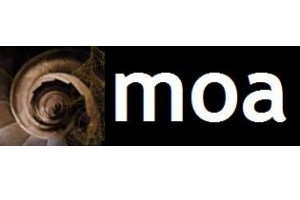The Big Data phenomenon is intrinsically related to the open source software revolution. Large companies such as Facebook, Yahoo!, Twitter, LinkedIn benefit and contribute to open source projects. Big Data infrastructure deals with Hadoop, and other related software as:
- Apache Hadoop : software for data-intensive distributed applications, based in the MapReduce programming model and a distributed file system called Hadoop Distributed Filesystem (HDFS). Hadoop allows writing applications that rapidly process large amounts of data in parallel on large clusters of compute nodes. A MapReduce job divides the input dataset into independent subsets that are processed by map tasks in parallel. This step of mapping is then followed by a step of reducing tasks. These reduce tasks use the output of the maps to obtain the final result of the job.
- Apache Hadoop related projects: Apache Pig, Apache Hive, Apache HBase, Apache ZooKeeper, Apache Cassandra, Cascading, Scribe and many others.
- Apache S4: platform for processing continuous data streams. S4 is designed specifically for managing data streams. S4 apps are designed combining streams and processing elements in real time.
- Storm: software for streaming data-intensive distributed applications, similar to S4, and developed by Nathan Marz at Twitter.
In Big Data Mining, there are many open source initiatives. The most popular are the following:
- Apache Mahout: Scalable machine learning and data mining open source software based mainly in Hadoop. It has implementations of a wide range of machine learning and data mining algorithms: clustering, clas- sification, collaborative filtering and frequent pattern mining.
- R: open source programming language and software environment designed for statistical computing and visualization. R was designed by Ross Ihaka and Robert Gentleman at the University of Auckland, New Zealand beginning in 1993 and is used for statistical analysis of very large data sets.
- MOA: Stream data mining open source software to perform data mining in real time. It has imple- mentations of classification, regression, clustering and frequent item set mining and frequent graph mining. It started as a project of the Machine Learning group of University of Waikato, New Zealand, famous for the WEKA software. The streams framework provides an environment for defining and running stream processes using simple XML based definitions and is able to use MOA, Android and Storm. SAMOA is a new upcoming software project for distributed stream mining that will combine S4 and Storm with MOA.
- Vowpal Wabbit: open source project started at Yahoo! Research and continuing at Microsoft Research to design a fast, scalable, useful learning algorithm. VW is able to learn from terafeature datasets. It can exceed the throughput of any single machine network interface when doing linear learning, via parallel learning.
More specific to Big Graph mining we found the following open source tools:
- Pegasus: big graph mining system built on top of MapReduce. It allows to find patterns and anomalies in massive real-world graphs.
- GraphLab: high-level graph-parallel system built without using MapReduce. GraphLab computes over dependent records which are stored as vertices in a large distributed data-graph. Algorithms in GraphLab are expressed as vertex-programs which are executed in parallel on each vertex and can interact with neighboring vertices.
